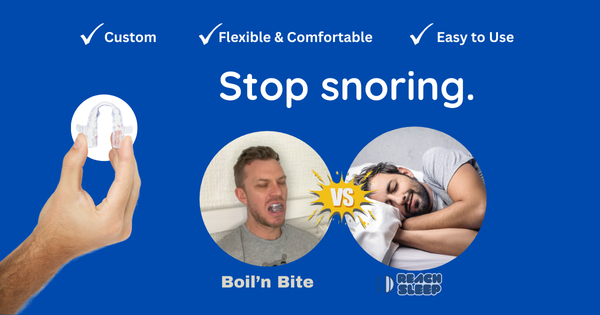Snoring is a common issue that affects millions of people worldwide, disrupting not only the snorer’s sleep but also their partner’s. Fortunately, snoring devices offer effective solutions to reduce or eliminate snoring. But what exactly are these devices, how do they work, and which type might be right for you? In this article, we’ll explore the mechanics and different types of snoring devices, including TAO by Reach Sleep, a custom oral appliance designed for maximum comfort and effectiveness.
What Are Snoring Devices?
Snoring devices are tools or appliances specifically designed to reduce or prevent snoring. They work by addressing the underlying causes of snoring, such as airway obstruction, soft tissue vibration, or tongue position. These devices are non-invasive and are a popular first step for people looking to improve their sleep quality without resorting to surgery or more complex medical interventions.
How Do Snoring Devices Work?
Snoring occurs when airflow through the nose and throat is partially blocked, causing the surrounding tissues to vibrate. Snoring devices help by:
- Keeping the Airway Open: Many devices reposition the jaw or tongue to prevent obstruction in the throat.
- Reducing Tissue Vibration: Some devices limit the movement of soft tissues that contribute to snoring.
- Encouraging Nasal Breathing: Other devices work to improve nasal airflow, reducing the likelihood of mouth breathing, a common contributor to snoring.
Different Types of Snoring Devices
There are various types of snoring devices on the market, each suited for different needs and preferences:
- Mandibular Advancement Devices (MADs)
- How They Work: MADs reposition the lower jaw slightly forward to keep the airway open during sleep.
- Options: These devices range from basic boil-and-bite models to custom-fitted appliances like TAO by Reach Sleep.
- Who They’re For: Ideal for individuals with mild to moderate snoring or obstructive sleep apnea.
- Tongue Retaining Devices (TRDs)
- How They Work: TRDs hold the tongue in a forward position, preventing it from collapsing back into the throat.
- Pros and Cons: While effective, some users find these devices less comfortable to wear.
- Nasal Dilators
- How They Work: These devices are placed inside the nostrils to improve airflow and reduce nasal obstruction.
- Best For: People who snore due to nasal congestion or narrow nasal passages.
- Chin Straps
- How They Work: Chin straps keep the mouth closed during sleep, encouraging nasal breathing.
- Limitations: Not suitable for those with nasal blockages or more severe snoring issues.
- Over-the-Counter (OTC) Snoring Devices
- Examples: Affordable options available on platforms like Amazon, such as boil-and-bite mouthguards.
- Drawbacks: These devices often lack customization, leading to discomfort and less effective results for many users.
Choosing the Right Snoring Device
When selecting a snoring device, consider the following:
- Comfort: A device that’s comfortable to wear increases the likelihood of consistent use.
- Effectiveness: Choose a device designed to address the specific cause of your snoring.
- Convenience: Look for options that are easy to clean, maintain, and travel with.
Final Thoughts
Snoring devices provide a practical and non-invasive solution to a widespread problem. While there are many options available, custom solutions like TAO by Reach Sleep offer a unique combination of comfort, effectiveness, and affordability. If you’re ready to say goodbye to sleepless nights and noisy interruptions, consider exploring TAO and enjoy the benefits of better sleep for you and your loved ones.




